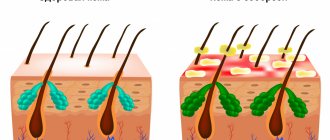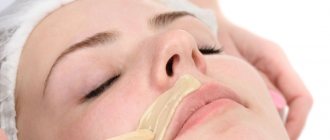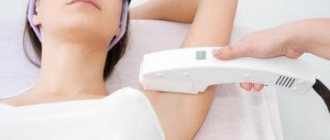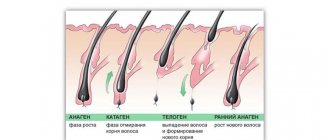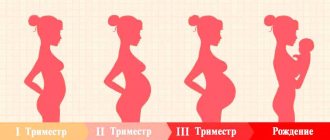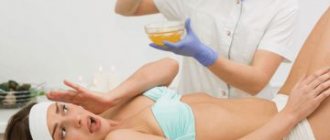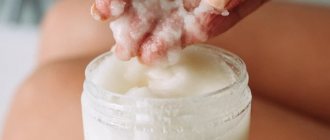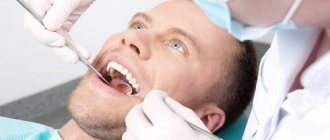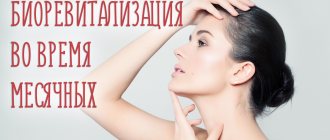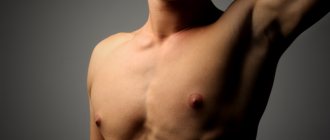This method, although not new, is less well known than laser hair removal or photoepilation. Let's find out what the features of hair removal with thread are and whether it is convenient to use.
Eyebrow trading is the modern name for one of the increasingly popular methods of removing excess hairs above the eyelids using threads, known since ancient times.
What is thread trading?
As we have already found out, threading is one of the hair removal methods that is used primarily for the face. The procedure is performed using threading thread, which is folded in such a way as to form a loop. The essence of the method is that the hairs are firmly captured in a loop and pulled out with a sharp movement. Typically, beauty industry professionals use a special high-strength Arabic thread or cosmetic nylon thread, which provide reliable adhesion to hairs and effectively remove them.
However, at home, regular cotton sewing thread can also be used, although it does not grip the hair so well, so you will have to work a little longer. Synthetic threads are not suitable for threading - their surface is too smooth, so the hairs simply slip out of the grip. In addition, many synthetic threads stretch, so they do not provide enough tension to securely hold the hair and pull it out.
The history of this procedure begins many hundreds of years ago in India and also in Korea, where women used the thread method to remove unwanted hair from the face. In the West and in our country, the general public learned about the procedure not so long ago, but many ordinary women immediately picked up the idea and did hair removal with thread at home. This technology came to beauty salons and the arsenal of services of home craftsmen several years ago.
Features of the trading procedure are as follows:
- in order for it to be convenient to work with the thread, the segment should be approximately 50 cm long;
- for each new procedure, a new cut of thread is used, and the used one is disposed of;
- if the thread for threading is stored correctly, this procedure will be considered the safest from a hygienic point of view - after hair removal, the risk of irritation, allergies or inflammation is minimal, so threading is suitable for those with sensitive skin.
History of the method
Back in ancient times, the East invented a method for removing unwanted hair using a thread, which in our time is called threading. Eastern beauties of that time knew a lot about seducing men, using all kinds of methods to improve their beauty. Every girl strictly underwent this ritual before the wedding, since a perfectly smooth, completely hairless body was considered a real symbol of the innocence of the soul and the purity of the bride. The ancient Persians believed that after going through the ritual of cleansing the skin of hair with a thread, a girl becomes a woman.
Pros of trading
The main advantages of thread trading include the following:
- accuracy - unlike waxing, where one awkward movement can deprive the client of half an eyebrow, threading allows you to work more directed and accurately with due care of the specialist;
- long-lasting effect - due to the fact that hairs are pulled out from the roots, new ones will not grow back for a long time; depending on the “treatment” zone, the procedure should be repeated less often – from two to four weeks;
- perspective - since when hairs are mechanically pulled out, the hair follicle is not damaged, but weakened, new hairs will grow more slowly and will be thinner;
- high speed of work - unlike tweezers, the thread captures several hairs at a time, so the procedure is carried out several times faster;
- as we have already explained, the risk of getting an infection is minimal, since the instruments are disposable; even if the master works with reusable instruments, incorrect or insufficient sterilization increases the risk of infection;
- there is no problem of ingrown hairs after the hair removal procedure, since the bulb is minimally damaged after mechanical hair removal;
- threading allows you to exfoliate the skin, since the thread not only pulls out hairs, but also exfoliates dead epidermal cells using the dry method;
- after removing hairs with a thread, there is no irritation or even redness left, so hair removal can be performed shortly before going to work or an important event - no one will even notice that the client has just had any beauty procedures;
- even colorless thin fluff, which is not always able to be grasped by tweezers, can be removed quickly and easily using a thread.
- And the main advantage of this hair removal method is that the procedure is inexpensive. This is relevant not only for clients who spend a little money on the procedure, but also for craftsmen - their work is paid decently, but at the same time the material (taking into account its quantity) is relatively inexpensive, and the low cost of the procedure makes it popular and in demand.
Another important advantage of the procedure is that the threading thread allows you to remove even those hairs that are not there. More precisely, they exist, but the master simply does not see them. You just need to walk the thread over the area of the skin where, presumably, there are unwanted hairs, and they will definitely be eliminated.
Disadvantages of trading
Perhaps there is only one disadvantage of trading – the painfulness of the procedure. However, this problem is easily solved - the client quickly gets used to the unpleasant sensations, and the rest of the time until the end of the procedure the pain is quite tolerable. Here, more attention should be paid to the sensitivity of a particular area of the skin. If before this the client plucked her eyebrows or fluff above her lip with tweezers or removed hairs with wax, pain during hair removal in these areas is quite familiar and expected.
But if you are removing vellus hairs from the entire face, be prepared for the fact that pain in “unusual” places may throw the client off balance at first. In such a situation, it is necessary to reassure her, and it is better to tell her in advance about the pain of the procedure. As we have already said, the client will quickly get used to the discomfort and learn to ignore it.
The following points can be attributed not to the disadvantages, but to the features of the procedure, but they need to pay close attention:
- If the skin is dry, irritated or inflamed, you should avoid the procedure so as not to aggravate the situation. Treating the skin before the procedure can dry out the skin even more and increase irritation. And if there are pockets of inflammation in the area, there is a risk of the thread spreading the infection to other areas of the skin. In addition, if the client has warts, moles, papillomas and other neoplasms, the thread can damage them (which, in turn, can lead to the degeneration of the formations into malignant ones), so the procedure is contraindicated.
- One day before and one day after the trading procedure, you cannot go to the bathhouse, sauna and pool, swim in the sea and sunbathe, or visit the solarium.
Contraindications
It is not recommended to use this technology in the following cases:
- Diseases of the epidermis (chronic and viral); scars and burns;
- Close location of blood vessels to the surface of the skin;
- Pregnancy and breastfeeding period (at this time
- Increased sensitivity to pain);
- Neoplasms located in the treated area (papillomas, warts, moles);
- Redness, rashes, allergic reactions;
- Damage to the skin, open wounds.
It is not recommended to use this method for women during menstruation, since at this time there is a high probability of inflammation. It is prohibited to carry out this procedure for those who are soon planning to undergo laser or similar hair removal: these methods are considered incompatible in cosmetology.
Side effects:
- Swelling and redness that appear due to friction of the thread on the surface of the body, however, pass quite quickly;
- Ingrown hairs (occurs when technology is violated).
If the skin is healthy, then the risk of side effects is minimal.
After the procedure, slight redness of the epidermis appears, which is easily eliminated with proper care.
On what areas of the skin can threads be used?
Thread threading can be used in absolutely any area of the body where sufficient skin tension is provided. That is, on the armpits, where the skin often gathers into wrinkles, such a procedure is very rarely performed, since there is a risk of catching a small fold and pinching it with a thread. Mostly threading is performed on the face, but there are also masters who work with thread on the legs, arms and even in the bikini area. This is not always advisable, since the hairs vary in structure and length, and the thread cannot always grasp them firmly. In addition, the surface to work on is large enough, so it will be faster and easier to use wax or sugar paste on these areas.
But in the head area, hair removal with thread is quite effective and advisable. Most often, craftsmen work with the following areas:
- eyebrows - if there are too many extra hairs, the thread allows you to remove them faster than tweezers, and the accuracy of the work does not suffer; if very short hairs have not been removed, they can already be removed with tweezers;
- hairline – if there is too much “undercoat” growing on the forehead and sides of the face, you can quickly and permanently get rid of it using a special thread;
- neck – the same excess “undercoat” hairs are quickly and effectively removed during the threading procedure;
- cheeks, cheekbones, chin, forehead and other places where vellus hairs grow;
- the area above the lip - it doesn’t matter whether darker and longer vellus hairs or thicker hairs grow there.
Customer reviews ↑
Lilia, 23 years old: I never thought that you could get rid of body hair this way. But one day, while vacationing in Egypt, I decided to get a pedicure at the salon. There the girl tidied up my nails, and then tied some knots on a thread and began to quickly pull out hairs from my fingers. Of course, the procedure is not very pleasant, I had to endure it, but I was satisfied with the result - my skin became even and smooth. But I became interested in her because after two weeks there were still no hairs. At home I already learned that you can do the same on your face. I want to try it.
Ruslana, 35 years old: I think that this is one of the best hair removal methods, although I only learned about it recently. It has only one drawback - you won’t be able to do everything yourself the first time. When I more or less understood how everything was done, I started removing hair from my legs - I spent 2 hours on one leg. At first the pain was felt, and then everything was tolerated quite easily. Now I'm trying to do my eyebrows using the same method. And if all else fails, you can always return to tweezers.
Nadezhda, 30 years old: I first learned about trading from the Internet. Before this, I didn’t think that you could do hair removal with a thread. Then I watched the training video and decided that I understood everything. I picked up the thread and started trying to do everything according to the instructions, but a lot of things didn’t work. So I decided to go to the salon and see how they would do it there. The girl quickly twisted the thread and removed hair with it - she did it quite well. I had to lie there for about an hour, for which I paid 1,500 rubles. In my opinion, it is quite expensive, and I didn’t really like the result. A week later, the hair grew back, and now there is even more of it. It seems to me that it is better to pay for laser hair removal and get a confident result than to try to pull something out with a thread every week.
How to do upper lip threading
To perform the procedure, the master will need the following materials and tools:
- Ice cubes – ice is a must-have in the workplace. Therefore, the master should have a mini-freezer, and if you work outside, ask the client to prepare a certain number of ice cubes in advance.
- Dry wipes to dry the skin after ice treatment, as well as wet wipes to wipe the skin after the procedure and clean it of removed hairs.
- Thread for threading.
- Nourishing cream for treating the skin after the procedure.
- Optional - talc or powder for better visibility of hairs, as well as to absorb excess moisture, which can prevent reliable adhesion of hairs to the thread.
- An antiseptic for treating the skin to minimize the chance of infection before and after the procedure.
- Makeup remover and skin cleanser.
Upper lip threading should be done in good lighting. Like any beauty procedure, hair removal with thread should be performed in light “like in an operating room,” so the workplace should be located either by a window in the daytime and good weather, or under special lamps with white light.
The sequence of actions to perform eyebrow threading is as follows:
- First, you should thoroughly cleanse the skin of makeup, dust and other contaminants using an oil-free product - lotion, tonic, micellar water;
- then you need to additionally treat the skin area with an antiseptic solution to reduce the risk of infection - for these purposes it is better to use chlorhexidine, which does not violate the integrity of the skin, does not burn or cause discomfort, and does not dry out the skin excessively (unlike alcohol or hydrogen peroxide);
- then, if necessary, sprinkle the skin with talcum powder or powder so that fine hairs become more visible on the skin;
- it is necessary to wipe the area of skin being treated with ice - this will narrow the pores and thereby reduce the risk of infection, as well as provide a slight anesthetic effect - this will make the hair removal procedure less painful;
- after treating with ice, it is necessary to dry the skin using dry wipes - the skin must be blotted, but not rubbed, so as not to cause irritation;
- Next, you should cut a thread approximately 50 cm long and tie its ends, thereby closing the thread in a circle;
- then a ring of thread is put on the fingers (except for the thumbs) and twisted 4-5 times to form a “figure eight” of thread - on each hand you get a ring of thread, and in the center is the place of twist;
- then the place of twist must be shifted from side to side by squeezing the fingers on one hand and unclenching on the other - this way you will understand the principle of the thread;
- then the index finger and thumb are inserted into each loop, a small loop is applied to the treatment site in the direction opposite the growth of the hairs, then with the movement of the fingers it sharply expands, and the place of twist is shifted, capturing and tearing out the hairs.
After the procedure, it is necessary to clean the skin with wet wipes, and you can also treat it with chlorhexidine or another antiseptic. Then the treated area is wiped with ice, dried with dry wipes, and a nourishing cream is applied on top.
If the client’s skin is too sensitive and immediately reacts to the procedure with redness, you can additionally apply a soothing agent under the cream, for example, a cooling gel, chamomile decoction, etc. Aloe gel, which can be bought in stores with Asian or natural cosmetics, is perfect. Also, masters often use zinc ointment, Boro ointment, or various balms with herbal components that accelerate the healing of the epidermis during microtraumas.
If the client’s skin is not very sensitive, and the procedure itself was performed correctly, after threading the skin will not be red or inflamed, so the client will be able to apply makeup in half an hour or an hour and go about her business.
Preparing for the session
The effectiveness of the procedure largely depends on the quality of the skin treatment.
For this you will need:
- Towel;
- Hot water;
- Decoctions of herbs with soothing and anti-inflammatory properties (for example, chamomile).
The towel is soaked in the broth and applied to the area where the treatment will be performed. After 2 minutes, the skin will steam and be ready for the session. If time permits, the compress can be replaced with a bath. You can begin the procedure after the surface of the body is dry. No hair removal manipulations are performed on wet skin.
Take a cotton thread about 50 cm long (materials such as silk and nylon are dangerous in this case). This instrument is disinfected with an alcohol solution. The thread is tied at both ends. You need to twist it several times to get an infinity sign.
It is recommended to start practicing on the lower extremities. The first procedures will take a lot of time until the skill comes.
How to do face threading
The procedure for facial hair removal with thread is no different in technology from that described above for treating the upper lip. It is necessary to carefully study the characteristics of the growth of vellus hairs, determine the direction of their growth and work strictly against this direction. To do this, you can additionally apply talc or baby powder to the skin - this will help make the hairs more visible on the face.
However, there are several questions regarding the need for this procedure in principle:
- We need vellus hairs in order to protect the skin from adverse environmental influences, as well as normal thermoregulation;
- after removing vellus hairs, they quickly begin to grow back, they look strange on the face, they can even prick; however, for their subsequent removal, it is necessary to wait until they grow back to a certain length so that the thread is able to capture and pull out the hairs.
Therefore, if the client’s fuzz on her face is weakly expressed and has no pigmentation, before carrying out the procedure, clarify whether she really wants to perform the hair removal procedure, explain what consequences await her.
Tools and materials
- A thread. It should be very durable, smooth, of medium thickness, cotton. Salons often use a special cosmetic thread, which consists of nylon fibers and easily catches and pulls out hairs.
- Cosmetic pencil for drawing the contour of the eyebrows.
- Mirror. The face and the hairs being removed should be clearly visible in it.
- Good lighting.
As additional means, you can use special tongs for securing and tensioning the thread (they make it more convenient to operate, and the thread does not cut into your fingers), antiseptic agents, talc, ice, moisturizer, eyebrow brush.
How to do eyebrow threading
Threading is a technology that is used not only by hair removal specialists, but also by eyebrow specialists. Using a thread, you can carry out effective and high-quality correction or eyebrow architecture, since threading allows you to quickly and accurately remove unwanted hairs without causing major trauma to the skin.
The procedure is especially in demand among owners of lush, thick and wide eyebrows with a large number of separately growing hairs. If the correction does not require removing a lot of excess bristles, the technician can do it faster with ordinary tweezers.
The method of threading a face with thread is not particularly difficult, and anyone can learn this technique. However, the accuracy, speed and accuracy of the work directly depend on experience and dexterity, plus it is always easier to perform the procedure on someone else than on yourself. In addition, with insufficient experience, you may not pull out the hairs, but break them off, which will subsequently lead to ingrown hairs. Therefore, it is better to turn to professionals for services, which is what you must convince your clients of.
It is also important to use high-quality and reliable materials and tools in your work, which you can buy in our online store. In our catalog, special threads for threading are available in a large assortment and at reasonable prices.
You will find all the necessary materials for the work of an eyebrow master in our store. Buy and work successfully and with pleasure!
Special instructions ↑
Trading
Before and during menstruation, it is better not to depilate with thread. Threading can cause a number of inflammatory processes. In addition, during and before menstruation, a woman is especially irritable, and another factor of pain will aggravate this problem and make the procedure unbearable.
Also, you should not do hair removal in the evening, after a hard day. Usually at this time there is a peak of fatigue, which does not allow you to relax. It's better to go to the salon in the morning.
